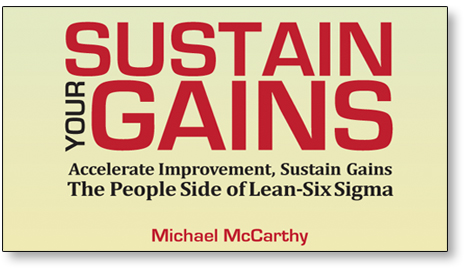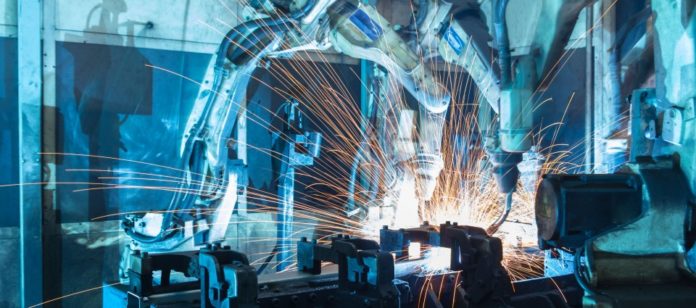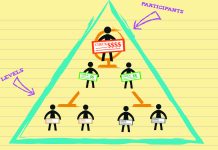This is a guest article, written by Mike McCarthy, the author of Sustain your Gains, and co-author (with his wife, Janis Allen) of Ready? Set? ENGAGE!, and How to Engage, Involve, and Motivate Employees. Mike is a Lean Manufacturing consultant, and an avid supporter of free markets.
Once upon a time Toyota engineer Taichi Ohno visited America to learn about better manufacturing methods. Entering a supermarket, he watched as customers opened the glass door of the milk cooler. When a customer took out one quart of milk, the supply of six or seven quarts slid forward. The rack was inclined to make it a gravity feed. Whenever a given rack was empty, store employees refilled it from a larger cooler located in a back room. The purchase of quarts of milk “pulled” the other quarts to slide down to the front of the rack. Whenever employees noticed an empty rack, they pulled more quarts from the larger cooler to place within the display cooler. They did not wait for a central manager to tell them to do this. The visual ‘pull’ of empty racks signaled them to do it.
This inspired Taichi Ohno to install pull systems inside Toyota factories. Pull systems became the heart of the Toyota Production System. The factory replenishment locations are still called ‘supermarkets.’ Each production cell is not to make any parts unless the kan-ban square in front of them is empty. Just like an empty rack in the milk cooler means “bring or order more milk,” empty kan-ban squares constitute a visual signal to make more parts.
What made this a revolution in manufacturing is that the Production Scheduling Manager did not decide how many parts or cars to make, the customers did. This included downstream ‘internal customers’ in the factory. The assembly department used fenders. The assembly department was therefore the ‘internal customer’ to the fender stamping department. An empty kan-ban square (no fenders) signaled the fender stamping department to make more fenders. Why? The ‘customer,’ the assembly department, wanted them. The empty kan-ban square was a ‘buy’ or ‘make more’ signal from the internal customer.

Before this revolution in manufacturing philosophy, it was not uncommon to see huge warehouses filled with parts made by the order of the Production Scheduling Manager. Sometimes the parts became obsolete, because that model of car was no longer in production. The materials, labor, and overhead used to produce these now-obsolete parts were wasted. This was called ‘push’ production. Push it out the door, not because a customer asked for it, but because the central production schedule said to do it.
This ‘push’ waste meant that American automobiles in the 1980s cost two to three thousand dollars more to produce than the equivalent Toyota model, even after the expense of shipping them from Japan. Toyota could price their cars lower and make a higher profit than American car companies.
In a free market economy, sales numbers are the ‘make more’ pull signal to suppliers. If a milk rack in the grocery store is near empty because customers are buying more, this signals the grocery manager to order more from the milk supplier. The milk supplier, in turn, orders more cardboard cartons from the carton supplier and more pasteurized milk from the dairy farmers.
The grocery stores do not maintain a huge refrigerated warehouse full of milk ‘just in case’ customers might want to buy more. Why? Because the unsold milk would spoil after a time. This waste would add to the grocers’ overhead cost. Either the cost of milk would go up, or the grocer would go out of business.
These hundreds of millions of sales ‘signals’ in a free market economy act miraculously to put milk in every household refrigerator. I don’t have to decide how many cows to milk. The market takes care of that. I don’t have to decide how many cardboard milk cartons to make. The market takes care of that. This is what economist Adam Smith called the ‘invisible hand’ that guides marketplace production. It certainly isn’t my hand. I would not have a clue. But the free market composed of millions of independent producers respond to the sales signal every time I buy the last carton of milk in the case. The signal is ‘make more!’
The economy of an entire nation requires a marketplace of millions of businesses and entrepreneurs free to respond to these hundreds of millions of sales ‘pull signals.’ The complexity is staggering, yet the free market delivers time after time.
The complexity is such that any group of central planners can never keep up with the supply and demand. This is why centrally planned (push) economies like Venezuela fail. Not only are there shortages of milk and other foods, but even utilities like water and electricity are rationed to certain hours per day. The central planners simply did not have the capacity of making the millions of daily decisions needed to put quarts of milk into millions of bodegas across the nation.
Pull versus push. Imagine trying to push a horse into a stall. Difficult. Imagine leading/pulling the horse with a bridle. Much easier. It is the same in manufacturing. It is the same in economies.
Those who follow business news know recent events that led to problems with Tesla, the electric car company. CEO Elon Musk decided he could run manufacturing with a central control from a computer. Push. The system broke down and production did not meet sales demand. Elon Musk is brilliant. He decided to ‘camp out’ at the factory and get everything straightened out. He was there 24/7, sleeping under his desk. Even his brilliant brain could not centrally control everything and make it work. I know of some customers who asked for their deposit back on the Tesla Model 3 that was months behind delivery dates. Elon Musk would not let go of central control and the Tesla production line failed. He had to lay off workers at Tesla. Toyota manufacturing lines, with no central control, with millions of ‘pull’ signals coordinating production, turn out cars effortlessly. Pull.
In a Lean Kan-Ban system empty squares or racks are used as the pull signal to make more of a product or a component.
In the free market, sales are the pull signals to entrepreneurs and businesses to make more of the product or service. Sold out iPhones = make more.
Both the free market system and the Lean manufacturing system work well, because they do not rely on ‘push’ central control. Both systems are ‘crowd sourced’ to use the billions of pull signals from customers, internal and external, to coordinate production. Both systems are self-adapting. When customers quit buying Thunderbirds, Ford quit making them. When customers buy more iPhones, Apple makes more of them. When customers buy more organically grown foods, farmers grow more of them. All without a czar telling them to do it. The free market is self-organizing.
We see that Occam’s Razor applies to systems as well. Occam’s Razor states “simpler solutions are more likely to be correct than complex ones.” Also known as the law of parsimony. Interestingly, the definition of parsimony is “frugality in the use of resources,” which is a Lean goal: reduce all forms of waste in the process.
The simplest economic system, the free market, works best. The simplest manufacturing system, Lean pull, works best. As Marvel Comics publisher Stan Lee used to say: “ ‘Nuff said.”

























